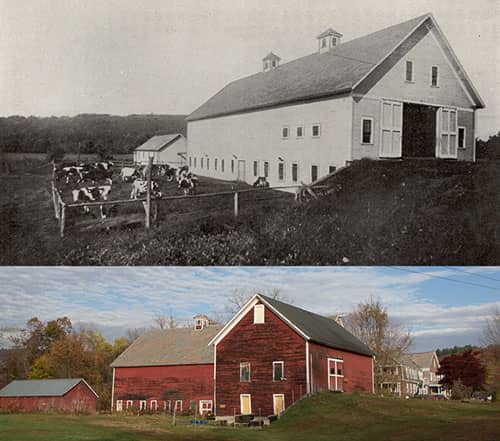
Town farms – or poor farms – provided a support system for society’s poor in the 1800s through the mid-1900s in New England. Often on the outskirts of town, the poor farm provided a sense of purpose for paupers who then provided labor for the farm. Just such a poor farm was owned by the Town of Greenfield from the 1850s to 1950s, at which time the Town began to rent the farmland out to farmers. In 2009, a partnership between Mount Grace Land Conservation Trust, the Town of Greenfield, Just Roots, and others began the process of preserving the land under APR. In 2011, Just Roots, whose mission is to increase access to healthy, local food by connecting people, land, resources, and know-how, was given a fifteen-year lease on the 61-acre parcel, to create the Greenfield Community Farm. This farm is realizing its mission by providing community workshops, outdoor education for school children, community garden plots, and more. This story is an excellent example of how a municipality can make more land available for farming while protecting farmland on the edges of population centers.
RELATED ACTIONS
- Land 2.3.1 Fully expend existing bond authorizations provided for the APR Program in the 2008 and 2014 Environmental Bond by 2018, and establish an annual bond cap that allows maximum leveraging of federal farmland protection funds. Increase funding for the APR Program in the next Environmental Bond consistent with goals set in the Farmland Action Plan. See Recomm…
- Land 2.3.2 Create dedicated APR funding specifically for projects not eligible for NRCS’ Agricultural Land Easement (ALE) program.
- Land 2.3.3 Increase the APR program’s current per-acre cap.
- Land 2.3.4 Task the ALPC with reviewing current APR program policies related to housing, farm infrastructure, the 5% impervious surface limit, and limits on renewable energy production if sited away from productive agricultural lands, and recommending changes as appropriate.
- Land 2.3.5 Work with USDA-NRCS to include in the state Farmland Action Plan any elements needed to enable the Plan to be used as an alternative pathway for ALE program eligibility. See Recommendation 2.1.
- Land 2.3.6 Allow pre-acquisitions of farmland through the ALE and APR program.
- Land 2.3.7 Eliminate the requirement that land be in active agricultural use for 2 years to be eligible for the APR program.
- Land 2.3.8 Support revisions to the Community Preservation Act that will provide additional funding to the Trust. Encourage communities to adopt the CPA, which provides funding streams for open space protection (including agricultural land) and affordable housing, as well as recreation and historic preservation.
- Land 2.3.9 Provide technical assistance to town Community Preservation Committees, Agricultural Commissions and land trusts about how CPA funds can be used to support farmland protection, as well as affordable housing associated with farmland.
- Land 2.3.10 Increase the state conservation tax credit, currently at $2 million annually, to $5 million annually, and improve its use with the APR Program.
- Land 3.11.1 Enact legislation to expand Chapter 61A eligibility to parcels smaller than 5 acres. Consider requiring an increase in the value of production threshold on smaller parcels to ensure that those parcels are being actively used for commercial agriculture.
